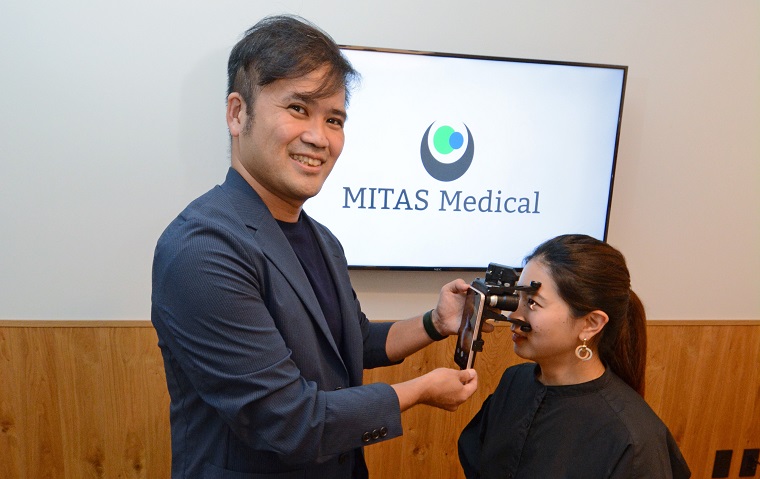Towards a World without Blindness: Interview with MITAS Medical CEO Naofumi Kita
Related Articles

No One Should Lose Their Eyesight
MITAS Medical deals in diagnostic devices that link regions lacking eye doctors with urban areas. The company focuses on emerging countries that have inequalities in healthcare access, while also expanding activities in Japan.
Naofumi Kita’s Interview
Under the mission “to provide medical services where it cannot be reached,” we provide ophthalmology diagnostic devices that enable telemedicine for the eyes in countries like Mongolia and Cambodia where there are not enough ophthalmologists.
In ophthalmic practice, we usually examine with a device called a slit lamp microscope to find out what diseases exist, in which part of the eye. Even for a professional ophthalmologist, it takes time to get used to operating this multi-functional device.

So we collaborated with the ophthalmological instrument manufacturer Takagi Seiko (Nakano City, Nagano) and developed MS1. This compact medical device enables non-specialists to take photos of the eye by substituting a part of the device with a smartphone. Designed for stable positioning on the patient’s forehead and cheeks, MS1 prevents vertical and horizontal shifts, and allows doctors without ophthalmological experience to focus and take eye photo using a smartphone.
So far, we have introduced MS1 to 20 locations in Mongolia and a foreign-affiliated hospital in Cambodia. Both countries have few ophthalmologists and regional disparities was an issue, so we decided to provide our service there.
Mongolia has a population of approximately three million, yet the number of ophthalmologists is about 125, of which 100 are in the capital city. Because of the vast terrain, it could take up to six or seven hours from the nearest clinic to the ophthalmology department in the central hospital of the province. In the three-month trial conducted in 2019, telemedicine was implemented in approximately 300 cases by linking village clinics with the central hospital’s ophthalmology department. We succeeded in finding a patient with acute glaucoma attack. The patient received appropriate treatment and was saved from losing eyesight.
We are also expanding our business in Japan. Currently, we are conducting trials in Hiroshima Prefecture, and plan to implement telemedicine that connects the clinic in a remote island off the coast of Hiroshima City with the prefectural hospital until the end of October.
I was surprised to hear even in Japan, about 680 municipals have no ophthalmology registrations.
Eyesight That Couldn’t Be Saved in Time
When I was working at a hospital in Hokkaido, an old woman living in the mountainous area came to see me reporting pain in her eyes. Examination results revealed that she had already gone blind in both eyes by an acute glaucoma attack. She said she went to the village clinic on the day the pain occurred, but the doctor just advised her to “visit an ophthalmologist if the pain continues.” It is a disease that makes you blind if neglected for a day or two.
An ophthalmologist would have sensed the urgency. This incident motivated me to create a simple scheme for connecting ophthalmologists and other doctors.
First, I created a model using a 3D printer. I had a feeling it would work out and started a company. Together with Director Kana Yamanaka who had been a nurse working with me at the hospital’s ophthalmology department, we developed the MS1 in roughly three years.
In the future, we will also work more on our activities in Japan, and expand business in home care where ophthalmologists cannot easily enter. For overseas activities, we want to enter other Asian markets, and hope the MS1 would eventually be used around the world.
We are committed to realizing a world where no one will lose their eyesight for the lack of access to an ophthalmologist.
————————————————————————
Company Profile
MITAS Medical Inc.
Business: Development and sales of ophthalmology diagnostic devices
Headquarters location: Minato-ku, Tokyo
Founded: April 2017
Capital: 100 million yen (legal capital surplus included)
Number of employees: 4
Website: https://www.mitasmedical.com/en/
————————————————————————
CEO Profile
Naofumi Kita
Born in Kobe in 1981. Graduated Kochi Medical School in 2007. After careers at the University of Tokyo Hospital and others, became an ophthalmologist in 2013. Founded MITAS Medical Inc. in April 2017. Age 40.




